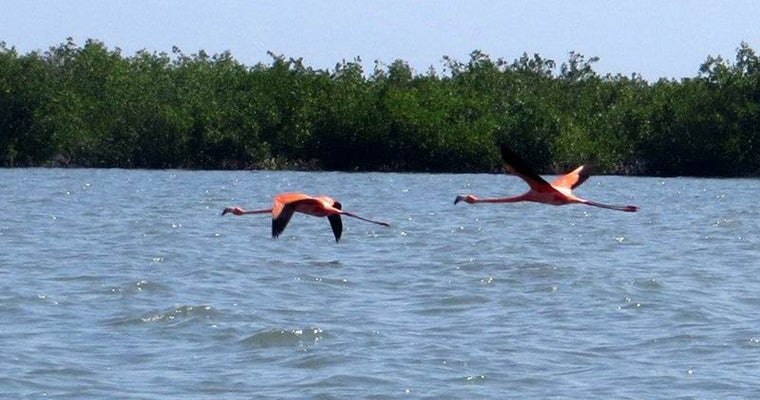It seems everywhere I look in Haiti lately we are finding a species of bird, or fish, or mammal, or diverse community of species we didn’t know was there. Whether it’s the humpback whale that took everyone by surprise by appearing in Fort Liberte Bay in January, the remarkable invertebrate diversity found in the crystal clear Riviere Glace in the buffer zone of Macaya National Park, the endemic fish discovered in the Trou du Nord river that runs through the Caracol Industrial Park, or the roseate spoonbills, white ibises and flamingos found along the coastal marshes of the Three Bays National Park. It seems you barely need to scratch the surface to turn up indicators of persisting high value biodiversity.
The more we understand about Haiti’s ecosystems, the more we realise not only the scale of their species richness but also the essential role they play in sustaining Haiti’s economy.
Haiti’s coral reef, sea grass and mangrove ecosystems sustain the livelihoods of over 50,000 fishermen, and they protect hundreds of towns and villages from the worst impacts of storm surges which accompany the annual hurricane onslaught. The forested hillsides of the Massif La Selle provide freshwater to millions living in Port au Prince and along the South coast, while retaining precious soil and preventing floods and landslides. Maintaining the health of these ecosystems is Haiti’s best insurance against the anticipated ravages of climate change – the intensifying storms and rising sea levels.
 And yet, so often I seem to hear statements like “Haiti doesn’t have the luxury of creating parks – it needs infrastructure!” and “There’s no need to worry about the environmental impacts of our development project in Haiti, there’s nothing left there that’s worth protecting!” Well, my response is, clearly you haven’t looked. Mountain forests, mangroves, reefs and other ecosystems are in fact green infrastructure that provides critical services that are particularly important for poverty reduction. When we design infrastructure investments to support livelihoods we need to make sure that we, as in Europe and other developed regions, include natural infrastructure. Establishing and ensuring the effective management of protected areas across all of Haiti’s ecosystems ensures the survival of the key generators of economic activity and lays the cornerstone of Haiti’s future economic development.
And yet, so often I seem to hear statements like “Haiti doesn’t have the luxury of creating parks – it needs infrastructure!” and “There’s no need to worry about the environmental impacts of our development project in Haiti, there’s nothing left there that’s worth protecting!” Well, my response is, clearly you haven’t looked. Mountain forests, mangroves, reefs and other ecosystems are in fact green infrastructure that provides critical services that are particularly important for poverty reduction. When we design infrastructure investments to support livelihoods we need to make sure that we, as in Europe and other developed regions, include natural infrastructure. Establishing and ensuring the effective management of protected areas across all of Haiti’s ecosystems ensures the survival of the key generators of economic activity and lays the cornerstone of Haiti’s future economic development.
Their remarkable biodiversity and high endemism, typical of island ecosystems, are what defines Haiti’s unique natural character. It is this unique natural character, together with Haiti’s particular cultural heritage, much more so than yet another Caribbean beach resort, that will provide the foundation and unique selling proposition that Haiti needs to compete and to drive future sustainable tourism development.
As we continue to work with Haiti’s fledgling National Protected Areas Authority (ANAP) and The Nature Conservancy (TNC) to complete the ecological baseline assessment for the newly declared Three Bays National Park and to advance efforts to create sustainable alternative livelihoods for the people who live there, we recognize that nature provides the essential infrastructure for economic development, and at much lower cost than built infrastructure. We must continue to engage our government partners and our colleagues in other sectors to help them appreciate that an investment in Haiti’s capacity to conserve nature is an essential component in Haiti’s economic development strategy.


Leave a Reply